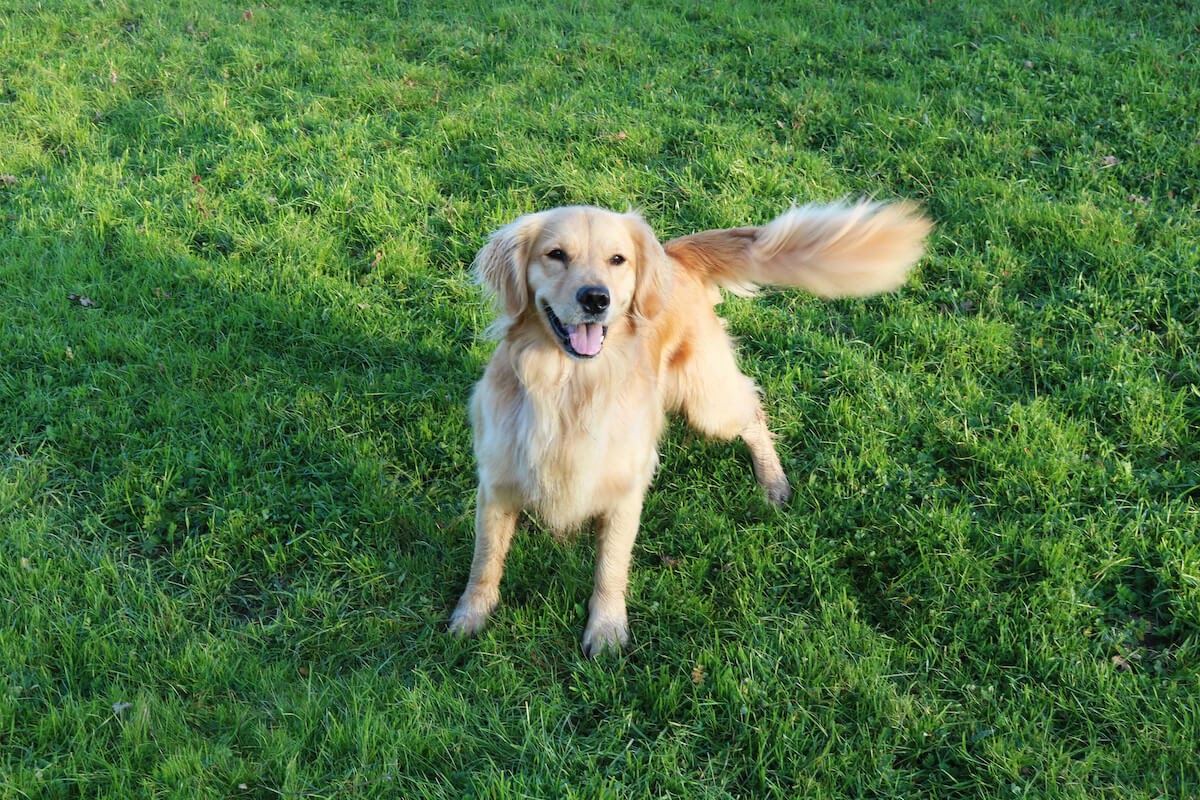There are a number of reasons why a dog might chase their tail! And although they might be doing it for a bit of fun, or because they are a bit bored, there are things that you, as their owner, should be on the lookout for.
Is tail chasing normal?
Occasional tail chasing is normal - and some breeds (like terriers or German shepherds) tend to chase their tails more often than other breeds.
They might also be chasing their tail as a way of getting some exercise and getting rid of some pent up energy, particularly if they are bored or frustrated.
And, if your puppy pooch has not yet quite realised that their tail is part of their own body, they may see it as a toy that should be chased around!
When is tail chasing not normal?
When taking care of your pooch, you should be aware of any unusual signs - like tail chasing - that might mean they are under the weather, and need some attention from you.
- Boredom: If you find that they are chasing their tail frequently, your pooch may be trying to attract your attention because they are bored. Make sure you set aside plenty of time to take them for walks, chase a ball or frisbee to get rid of all their pent up energy. They also might be happy with a little bit more of ‘me’ time - some time sitting together with their master/mistress can do wonders for a pooch!
- Stress: Your dog could be chasing their tail as a way to cope with feeling worried. There are a number of things that might cause stress in dogs. If your canine pal is normally laid back and relaxed, but has started to act differently (like chasing their tail) try and work out what might have changed in your home that would make them feel stressed. Are there unusual loud noises around - like building works or fireworks? Have you moved to a new home recently and they have not yet settled in? Are you leaving them at home alone for longer periods of time than usual? Once you have worked out the cause of their stress, you should be able to help them cope by rectifying the situation.
- Pain: Your pooch may be chasing its tail if they have an infection or a painful area on their tail. Perhaps their tail might have been caught in a door by accident, or maybe it was damaged during playtime with another dog. Make sure you check their tail for any signs of damage and get them checked out by a vet if there is any cause for concern.
- Irritation: We humans know how frustrating it can be when you can’t quite reach far enough to scratch that itch on your back! It can be the same for your pooch! If they have an itchy spot on their tail that they can’t reach, they may be trying to reach it and as a result end up chasing their tail. Make sure you check their tail for any skin abnormalities and if you find anything suspicious get a vet to check them out.
- Medical Issues: Sometimes dogs will chase their tails if they are suffering with intestinal parasites like tapeworms which can make them feel itchy around their anus, or they may have food allergies or external parasites, like fleas. In extreme cases, tail chasing can also be an indication of a neurological problem.
- Compulsive Disorders: Like humans, some dogs can suffer from OCD (obsessive-compulsive disorder) which is a repetitive irresistible urge to perform a behaviour without an apparent purpose - and this may manifest itself in your dog as tail chasing.

It is therefore important that any medical problems are investigated by a vet who may recommend local treatment, oral medication or diet change according to the problem.
Does your dog chase their tail when faced with situations they find challenging, such as meeting unfamiliar people in the park? Is it possible to distract your dog from chasing their tail with something else, such as a ball or their favorite toy? Has your dog caused any injury to their tail from repetitive tail chasing?
If you have noticed that repetitive tail chasing happens in certain situations and that it is hard to distract them, it is possible that the tail chasing is a form of compulsive disorder. It’s important to seek advice from your vet and a qualified behaviorist early, as the longer a compulsive disorder is left untreated, the harder it is to resolve.
How can I help my pooch?
If your dog only chases their tail occasionally, there is no need for concern. As long as you keep them active, both physically and mentally, with regular exercise and training, you should be able to avoid any tail chasing becoming a habit.

However, if they start to do it more often, or only in certain conditions, work with your dog to minimise the impact of these situations so that they don’t find themselves chasing their tail as a way to cope. Never encourage your dog to chase its tail; although you might find it amusing to begin with, it could lead to complications and an unhappy pooch.
If you find that your dog gets stressed in different situations, try using ADAPTIL to help your dog stay calm and stress-free, no matter the situation.

